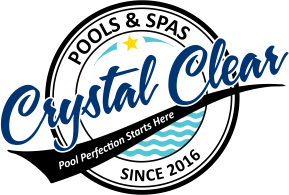Alkalinity in pools is an extremely important topic as it’s what helps prevent sudden pH changes. Total alkalinity is a measure of alkaline substances in this case, ionic compounds, that act as buffers that resist pH change.
Don’t worry, this is just a bunch of chemistry and scientific mumbo jumbo that you really don’t need to know. What is important to understand is that alkalinity helps stabilize the pH balance in your pool, and keeping it within normal range can save you a lot of headaches as well as solve a lot of problems.
The recommended range for a swimming pool’s total alkalinity is between 80 and 120 parts per million. Any good pool testing kit will let you determine the range, and it’s important to test often.
So, when it comes to alkalinity there are really only 3 states in can be in: Too High, Too Low and Just Right.
Low Alkalinity With low alkalinity your pH levels can swing back and forth between too high, and too low. It’s not uncommon for these numbers to shift drastically causing an unbalance in your pools pH.
Some problems that are associated with this include: -Chlorine inefficiency -Metal Corrosion -Pool Staining -Scale
You can easily raise a pool’s alkalinity by using a chemical called sodium bicarbonate which is, baking soda. The recommended dosage is 1.5 pounds of sodium bicarbonate per 10,000 gallons of water. If you’re unsure how much water you have you can find a good estimate by using this formula:
Add the amount you need with your pump running, to make sure the chemicals are mixing nicely. Do this once every 4 days until your alkalinity becomes stabilized.
High Alkalinity With high alkalinity your pH will generally be much higher than normal as well. A good sign that you’re dealing with high alkalinity is having cloudy swimming pool water.
Other problems include: -Reduced pool circulation -Clogged Filter -Rough Surfaces
Since your pool is too alkaline the best way to correct this problem is by using an acid. For swimming pools we either use muriatic or sodium bisulfate. You can purchase either at any swimming pool and spa store.
The best approach I’ve personally found with this is to first begin by adding enough acid to bring your pH balance down to 7.0. Then, let the pool sit for awhile until the pH climbs back up to around 7.2. Repeat this process until your pool alkalinity seems to have stabilized, but be sure to follow the directions on whichever acid product you decide to go with so as not to add too much acid.
